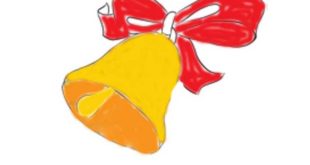When it comes to drawing things, crayons are probably one of the most well known and beloved of mediums. Just about everyone has spent some time using them to color a picture or draw something new. Besides, who doesn’t remember enjoying the smell of a fresh pack of crayons when they were young?
Availability
Pretty much any store that carries general goods will also carry a supply of crayons, making it very easy to go out and pick up a box whenever you need more. Smaller 8-color sets are fairly common, but I see more and more stores stocking the huge 64 color packs these days. Art supply stores may also have specialty crayons (such as crayons with glitter mixed in the wax) or ways of buying a specific color in bulk. I’d also suggest checking toy stores, as children’s craft sections are frequently loaded with different types of crayons.
Strengths
Handled well, crayons provide a fairly uniform color, making them excellent for coloring what you’re working on. If you are careful with how much pressure you’re using, you can also blend colors together very easily.
A unique trait of crayons is that all sides of the crayon can be used for drawing and coloring. It’s still a good idea to stick to just the tip of the crayon, but you can always use the side to cover a broad area, sharpen both ends, or even use the crayon itself as the canvas by gently carving it.
Weaknesses
Different brands can vary in quality pretty wildly. Cheap store brand crayons are probably going to be the worst for this, but nearly all crayons are fragile enough to snap under pressure. If they snap while you’re using them, they will probably leave marks that damage your picture badly. Another thing to keep in mind are that strokes left by a crayon can’t be erased very easily or completely, so be ready to cover over mistakes.
Probably the least thought about problem with crayons is that the wax they use melts when heated. Normally this isn’t much of a problem as the crayons themselves aren’t going to get soft enough to be troublesome. However, certain types of lamination are sealed by heat, and crayon art will be ruined if you laminate it this way.
Tips
- Try to be very gentile when coloring with a crayon. It doesn’t take much pressure to color with them and surprisingly little pressure to snap them.
- Glitter crayons tend to shed glitter everywhere, so use your glitter crayons last and handle them as little as possible.
- While sharpened crayons make a finer line, the edge of an unsharpened crayon will work just as well. Sharpening too often or to too fine a point makes a crayon likely to snap.
- Crayon does not scan well. Aside from appearing spotty and streaky in the scanned image, they have a chance of leaving wax flecks on the scanner. Some scanners also get hot enough to smear the crayon!
- You can actually use the low melting point to your advantage: use a tissue to buff crayoned pieces will partially melt the colors, creating a more even and glossy finish.
 Drawn light
Drawn light



